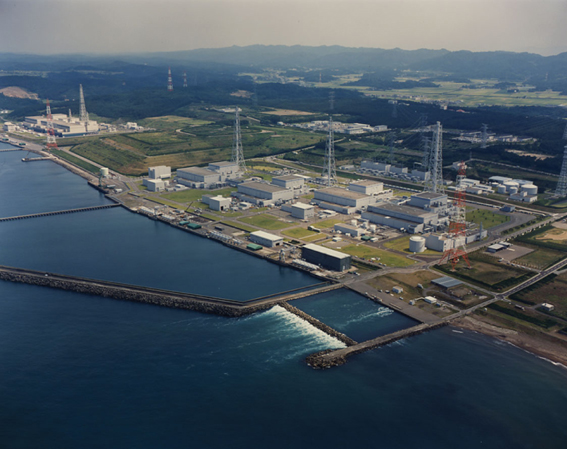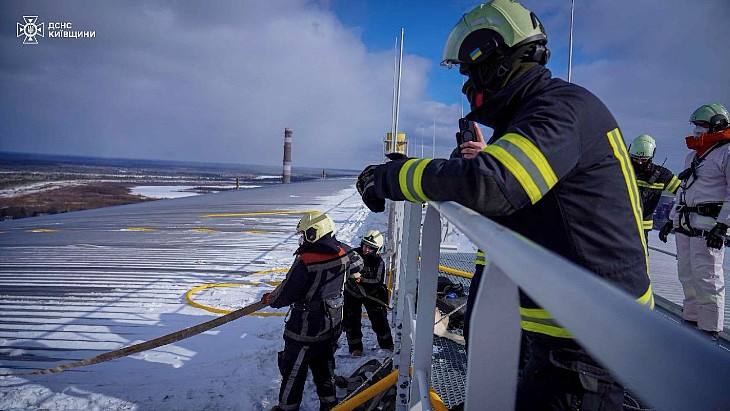Operational safety improves at Kashiwazaki-Kariwa
 Tokyo Electric Power Company has addressed many of the recommendations made following a 2015 assessment of operational safety at its Kashiwazaki-Kariwa plant by the International Atomic Energy Agency. However, the IAEA says work should continue in some areas.
Tokyo Electric Power Company has addressed many of the recommendations made following a 2015 assessment of operational safety at its Kashiwazaki-Kariwa plant by the International Atomic Energy Agency. However, the IAEA says work should continue in some areas.Tokyo Electric Power Company (Tepco) has addressed many of the recommendations made following a 2015 assessment of operational safety at its Kashiwazaki-Kariwa plant by the International Atomic Energy Agency (IAEA). However, the IAEA says work should continue in some areas.
 |
| Kashiwazaki-Kariwa (Image: Tepco) |
In late June 2015, an IAEA Operational Safety Review Team (OSART) was sent to units 6 and 7 of the Kashiwazaki-Kariwa plant in Niigata prefecture at the invitation of the Japanese government. The assessment focused on safety measures that have to be in place regardless of whether the plant is operating. It included a review of areas including leadership and management, training, operations, radiation protection, technical support, operating experience, emergency preparedness and severe accident management. The OSART team noted a series of good practices and made recommendations to reinforce some safety measures.
OSART missions aim to improve operational safety by objectively assessing safety performance using the IAEA's Safety Standards and proposing recommendations for improvement where appropriate. Follow-up missions are standard components of the OSART program and are typically conducted within two years of the initial mission.
A four-member team - including two members of the original 2015 OSART mission - has now carried out a follow-up mission to the Kashiwazaki-Kariwa plant. The assessment took place from 31 July to 4 August.
The team found Tepco has fully implemented several of the earlier recommendations and suggestions. These include the updating and integration of emergency operating procedures, standard operating procedures and accident management guidance, as well as improving the plant's emergency plan. Tepco has also ensured proper arrangements and practices for contamination control are implemented.
However, the team recommended that work continues in several other areas, including the implementation of an integrated system to manage all operating experience information. Tepco should also establish a procedure to ensure the availability of complete and reliable plant design data, including long-term storage and safekeeping of detailed design documentation throughout the plant's lifetime.
Team leader Peter Tarren, head of the IAEA's operational safety section, said: "Tepco has addressed several issued identified in the 2015 review. Though there has been progress, work is still needed to address some recommendations in order to strengthen the plant's operational safety."
The IAEA team has provided Tepco a draft of its report and will submit its final report to the Japanese government within about three months.
Kashiwazaki-Kariwa was unaffected by the March 2011 earthquake and tsunami which damaged the Fukushima Daiichi plant, although the plant's reactors were previously all offline for two to three years following the 2007 Niigata-Chuetsu earthquake, which caused damage to the site but did not damage the reactors themselves. While the units were offline, work was carried out to improve the plant's earthquake resistance.
Tepco has applied to restart units 6 and 7 of the Kashiwazaki-Kariwa plant. The 1356 MWe Advanced Boiling Water Reactor units were built in the late 1990s. The company has submitted information on safety upgrades across the site and at those two reactor units that it claims meet new regulatory requirements. Although it has done work at the other units at the site, Tepco is concentrating its resources on units 6 and 7 while it deals with the clean-up at Fukushima Daiichi.
Researched and written
by World Nuclear News










_50521.jpg)

